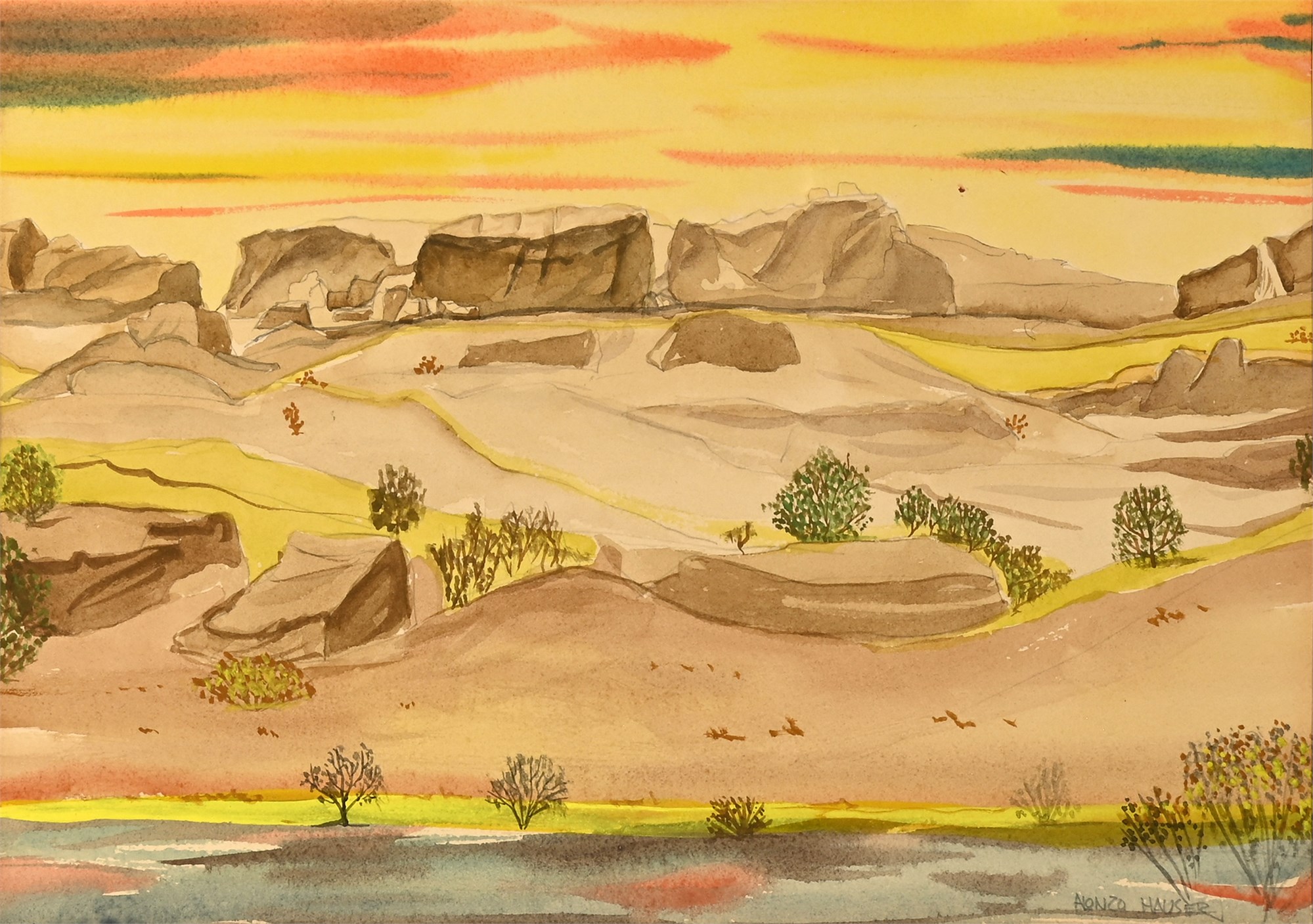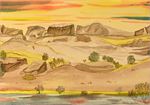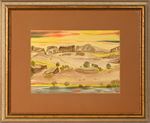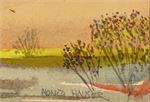Alonzo Hauser Desert Landscape Watercolor — Signed, Framed View Watchlist >
- Winning Bid: $110.00
- 36 Bid(s) View Bid History
- High Bidder: Jiron
Seller Accepts Credit Cards
Payment and pickup instructions will be available on your invoice (under "My Account") at the conclusion of this auction.
Lot # B558
System ID # 21287329
Start Date
End Date
1 Watching
Alonzo Hauser Desert Landscape Watercolor — Signed, Framed
This original watercolor painting by Alonzo Hauser (1909–1988) depicts a serene desert landscape with rugged rock formations, sparse vegetation, and a vibrant sunset sky. Hauser’s expert use of earthy tones, delicate brushwork, and warm color contrasts captures the natural beauty and tranquility of the American Southwest. Signed in the lower right corner, this piece exemplifies Hauser's talent for capturing the essence of nature. The artwork is mounted under glass and presented in a classic beveled wooden frame with a brown mat, ready to be displayed.
Condition:
In good condition overall. The frame shows minor scuffs consistent with age and use.
Dimensions:
- Overall: 18.75" x 22.75"
- Visible Image: 9.5" x 13.5"
Artist Bio:
Alonzo Hauser was an American artist and educator celebrated for his contributions to both sculpture and painting. Born in La Crosse, Wisconsin, Hauser displayed an early talent for the arts and pursued formal training at the Layton School of Art in Milwaukee from 1927 to 1929. Under the mentorship of artists like Walter Quirt and Girilamo Piccoli, Hauser honed his skills, particularly in sculpture, which would become a hallmark of his career.
In 1930, Hauser moved to New York City to apprentice as a stone carver with Amedio Merli. He further refined his artistic voice by studying in France and at the Art Students League of New York under renowned sculptor William Zorach. During the Great Depression, Hauser contributed to several public art projects under the Works Progress Administration (WPA), creating sculptures and murals that remain a testament to his artistic legacy.
In 1945, Hauser became the founding director of the Art Department at Macalester College in St. Paul, Minnesota, shaping the institution’s arts curriculum and mentoring future generations of artists. Over the years, he also taught at Carleton College, the Layton School of Art, and the University of Minnesota’s School of Architecture. His works are held in esteemed collections, including the Walker Art Center, the Minnesota Museum of American Art, and the Minnesota Historical Society.
While primarily known for his figurative sculptures, Hauser was also an accomplished painter, often capturing the landscapes of the American Midwest and Southwest. His watercolors, such as the desert scene featured here, demonstrate his keen eye for natural forms, earthy color palettes, and a harmonious sense of composition.
Alonzo Hauser’s legacy endures as a versatile and influential figure in 20th-century American art, leaving behind a body of work that bridges both sculpture and painting with a distinct sense of craftsmanship and aesthetic sensitivity.




